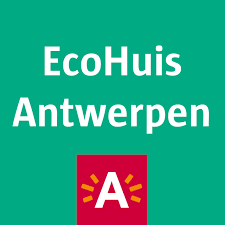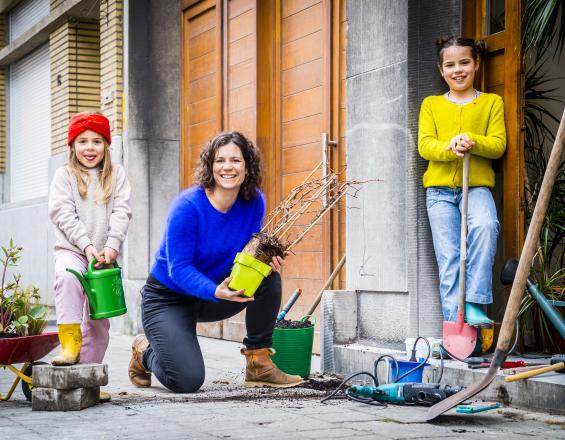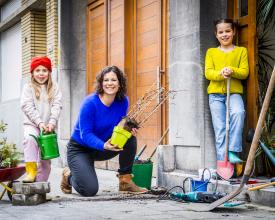
Swapping paving for plants - the City of Antwerp regreens through public participation

A common problem in the urban landscape is that of hard, impervious surfaces such as pavements, concrete buildings or asphalt roads, preventing the infiltration of rainwater into the soil. This has the effect of increasing flood risk while limiting the recharge of groundwater reserves. Hard grey surfaces also retain large quantities of heat energy and contribute to the urban heat-island effect.
Plants, trees and green spaces on the other hand can intercept water allowing it to infiltrate into the soil. Through evapotranspiration and the provision of shading, vegetation can help to cool the urban environment.
To reduce the area of impervious surfaces, the City of Antwerp organised the initiative of “Break Out” (Flemish: BreekUIT) which made citizens aware of the issue through a series of webinars and encouraged them to depave their property. For each 0.1 m² of hard surface that citizens removed on their own courtyard, terrace, front or rear facade, they received a free plant in return.
Impacts
The first edition of BreekUIT has engaged 496 citizens and 30 organisations, schools and companies in making the city greener, healthier and wilder. Together they removed some 3,888 paving stones, depaving an area of more than 3,740 m². These were replaced by a staggering 11,633 plants. Participants were able to choose from a variety of 25 plant species, according to what would work on their property (e.g. shady versus sunny conditions). The plant species were carefully selected to increase native biodiversity. For instance, they included several flowering plants to support pollinator communities.
Through a series of educational webinars, participants learnt about the actions taken by the City of Antwerp to strengthen climate-resilience and boost biodiversity. They also leant about how they, as individuals, can help to make their city greener, healthier and wilder, not least by depaving their properties.



